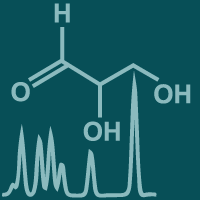Topic Menu
► Topic MenuTopic Editors



Plant Metabolism under Stress
Topic Information
Dear Colleagues,
Under climatic change conditions, plants are subjected to a multitude of abiotic and biotic stress factors. Plant stresses induce alterations in the primary metabolism and lead to oxidative stress, the disruption of the osmotic homeostasis, the damage of membrane and functional proteins, and the induction of secondary messengers, such as Ca2+ and ROS. Stresses trigger the production of phytohormones, leading to alterations in plant balance, which are components that are involved in plants’ adaption to numerous external stimuli. Significant progress has been made to characterize stress-modified metabolic pathways. For instance, stress-responsive proteins, such as antioxidative enzymes and pathogenesis-related (PR) proteins, as well as lignification-related enzymes and their roles in stress responses and tolerance mechanisms have been extensively studied. Moreover, the characterization of core hormone signaling components and their gene expression profile in response to abiotic and biotic stresses have progressed. Increasing evidence of the regulatory role of ROS in primary and secondary metabolism, redox control and Ca2+-dependent photosynthesis has been provided. More recently, new insights into the hormone-induced innate immune system in the plant–pathogen interaction have been presented. Cultivar and/or genotypic variation in water and nutrient use efficiency have been included as an important subject in management and breeding programs to improve the plant stress tolerance. Articles on recent advances in plant metabolism with regard to stress responses and tolerance mechanisms are welcome. We encourage the submission of high-quality original research articles, short communications, reviews, mini-reviews, and perspective papers. This special topic is concerned with fundamental and applied plant physiology, biochemistry, molecular biology and related interdisciplinary fields, covering the scope of MDPI journals Agriculture, Agronomy, Metabolites, Plants and Crops.
Dr. Cécile Vriet
Prof. Dr. Luis Gómez
Prof. Dr. Tae-Hwan Kim
Topic Editors
Keywords
- stress-responsive proteins
- Redox sensing processes
- alteration of primary metabolism
- stress intensity-responsive ROS signaling
- secondary metabolites
- plant-microbiome interactions
- plant innate immunity
- cultivar and/or genotype variation.
Participating Journals
| Journal Name | Impact Factor | CiteScore | Launched Year | First Decision (median) | APC |
|---|---|---|---|---|---|

Agriculture
|
3.3 | 4.9 | 2011 | 20.2 Days | CHF 2600 |

Agronomy
|
3.3 | 6.2 | 2011 | 15.5 Days | CHF 2600 |

Crops
|
- | - | 2021 | 24.2 Days | CHF 1000 |

Metabolites
|
3.4 | 5.7 | 2011 | 13.9 Days | CHF 2700 |

Plants
|
4.0 | 6.5 | 2012 | 18.2 Days | CHF 2700 |

MDPI Topics is cooperating with Preprints.org and has built a direct connection between MDPI journals and Preprints.org. Authors are encouraged to enjoy the benefits by posting a preprint at Preprints.org prior to publication:
- Immediately share your ideas ahead of publication and establish your research priority;
- Protect your idea from being stolen with this time-stamped preprint article;
- Enhance the exposure and impact of your research;
- Receive feedback from your peers in advance;
- Have it indexed in Web of Science (Preprint Citation Index), Google Scholar, Crossref, SHARE, PrePubMed, Scilit and Europe PMC.

